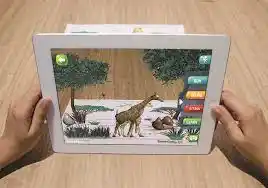12 Mobile App UI/UX Design Trends for 2023 | Design Studio

Staying up-to-date with the latest UI/UX design trends is crucial for creating successful and engaging user experiences.
As we step into 2023, several exciting design trends are shaping the way we interact with mobile applications.
In this article, we’ll explore 12 mobile app UI/UX design trends that are gaining prominence this year.
1. Dark Mode Dominance
Dark mode continues to be a popular trend, offering users a visually appealing and comfortable experience, especially in low-light conditions. App designers are leveraging dark backgrounds with vibrant accents to create a sense of depth and contrast.
2. Neumorphism Resurgence
Neumorphism, a design style that combines skeuomorphism and flat design, is making a comeback. This trend uses subtle shadows and highlights to create a tactile appearance, enhancing the user’s connection with the interface.
3. Immersive 3D Elements
Advancements in technology have enabled the integration of immersive 3D elements within mobile apps. From interactive 3D models to spatial UI, designers are enhancing user engagement by adding a new dimension to their designs.
4. Micro-Interactions with Purpose
Micro-interactions, such as animations, haptic feedback, and sound effects, are being used strategically to guide users, provide feedback, and create memorable interactions. These small but impactful details contribute to a more delightful user experience.
5. Thumb-Friendly Navigation
With larger screens becoming common, designers are placing navigation elements within easy reach of the user’s thumb. This trend ensures seamless and effortless navigation, particularly on devices with larger displays.
6. Voice User Interfaces (VUI)
Voice interactions are gaining momentum as natural language processing improves. Designers are optimizing apps for VUI, enabling users to perform tasks using voice commands, making the overall experience more intuitive.
7. Minimalist Interfaces
Simplicity and minimalism continue to be strong design principles. Clean and clutter-free interfaces focus on essential content, improving readability and allowing users to complete tasks without distractions.
8. Biometric Authentication Integration
Security remains a priority, and designers are incorporating biometric authentication methods such as facial recognition and fingerprint scanning. These features enhance app security while offering a seamless login experience.
9. Customizable Components
Empowering users to personalize their app experience, customizable components are becoming more prevalent. From changing color schemes to arranging layouts, this trend adds a personal touch to the user journey.
10. Augmented Reality (AR) Enhancements
AR is finding its way into mobile apps, providing users with interactive and engaging experiences. From trying on virtual products to exploring real-world environments, AR is creating immersive interactions.
11. Data Visualization Innovations
Apps are presenting data in more visually appealing and understandable ways through creative data visualizations. This trend helps users make sense of complex information quickly and effectively.
12. Sustainability-Centric Designs
As environmental awareness grows, some apps are incorporating eco-friendly design elements. Sustainable colors, organic shapes, and environmentally conscious messaging align with users’ values and resonate with a broader audience.
FAQs
How can I implement dark mode effectively in my mobile app?
To implement dark mode effectively, consider using high-contrast colors for text and icons, optimizing legibility in both light and dark themes. Also, provide users with the option to switch between modes in the app’s settings.
What are micro-interactions, and why are they important for app design?
Micro-interactions are small, subtle animations and feedback that enhance the user experience. They provide visual cues, guide users through processes, and add a sense of interactivity, ultimately making the app more engaging and user-friendly.
How can I integrate voice interactions into my mobile app?
To integrate voice interactions, you’ll need to incorporate a voice recognition system and develop a user-friendly voice interface. This involves considering user commands, responses, and context to ensure a seamless and effective voice user experience.
Are there any tools available for creating augmented reality experiences in mobile apps?
Yes, there are several tools and platforms, such as ARKit (for iOS) and ARCore (for Android), that provide developers with the necessary resources to create augmented reality experiences. These tools offer libraries, frameworks, and APIs to facilitate AR development.





